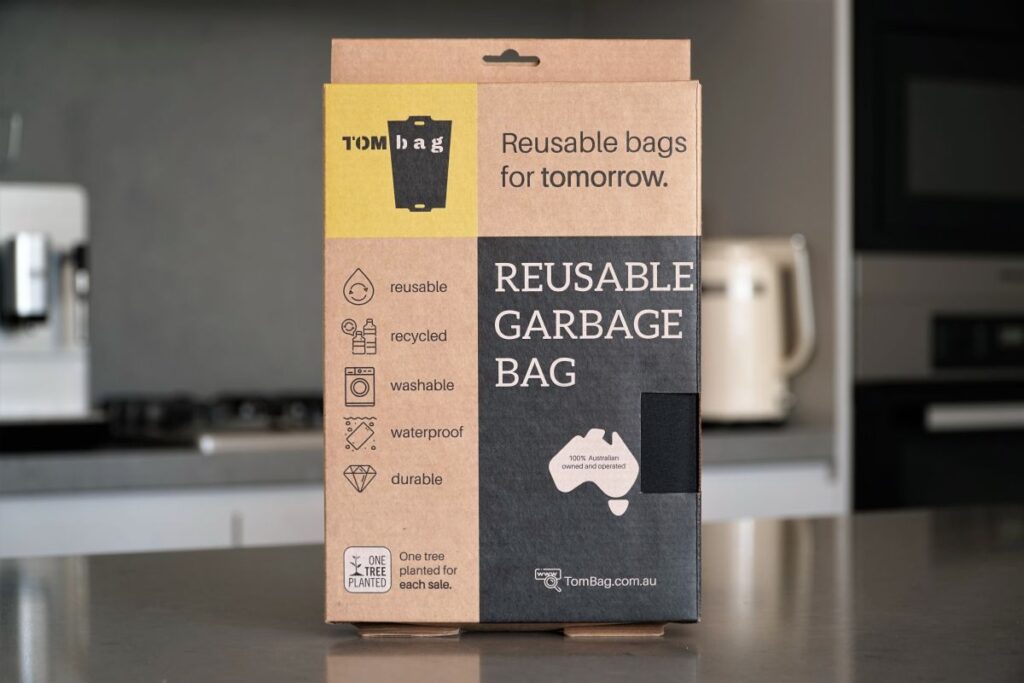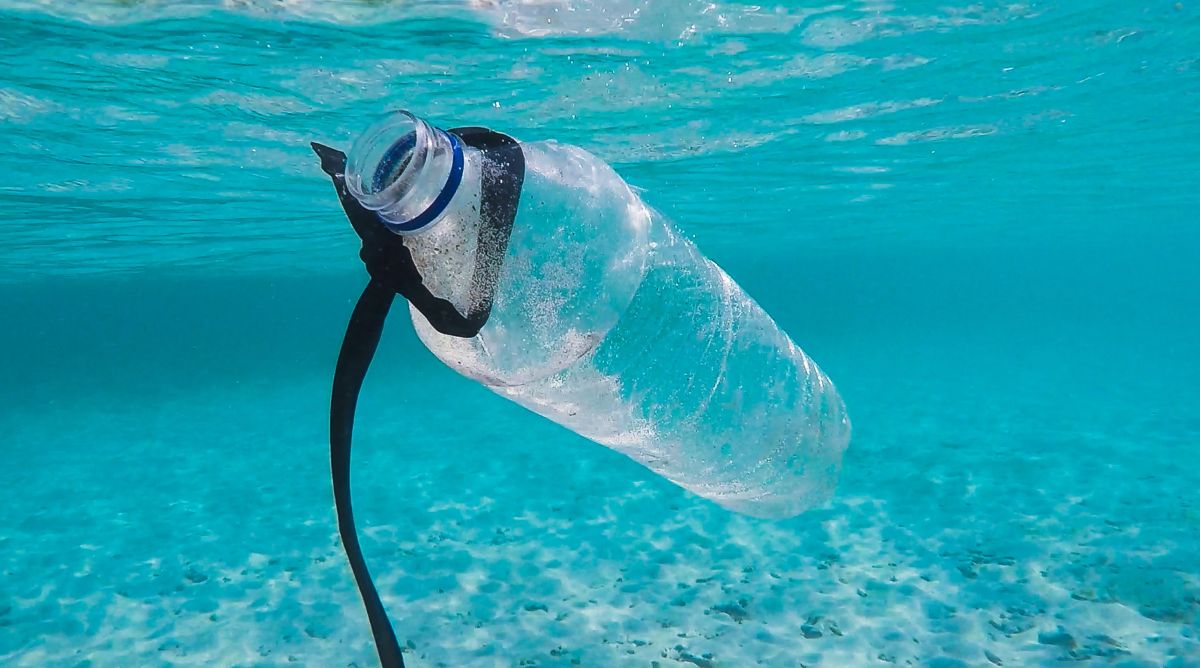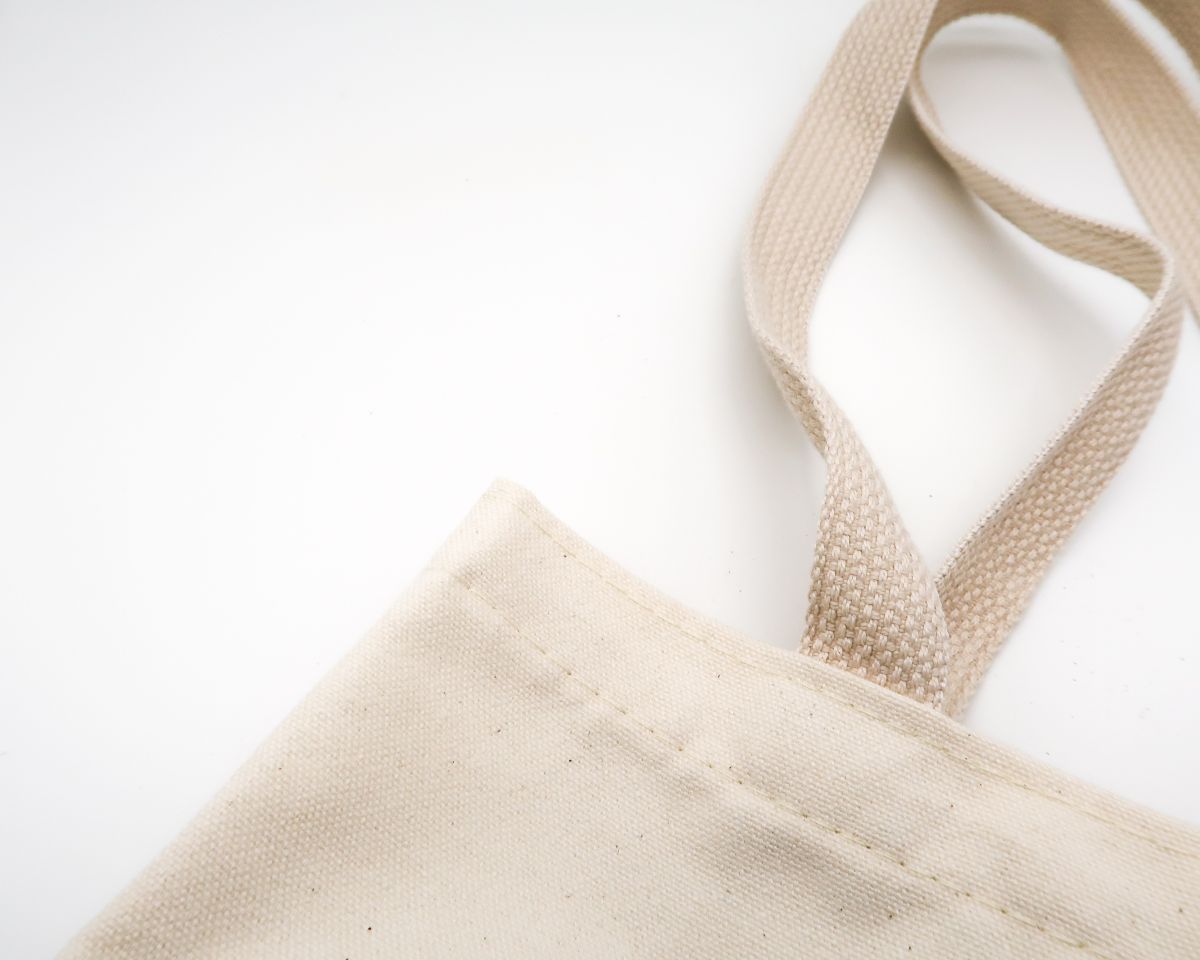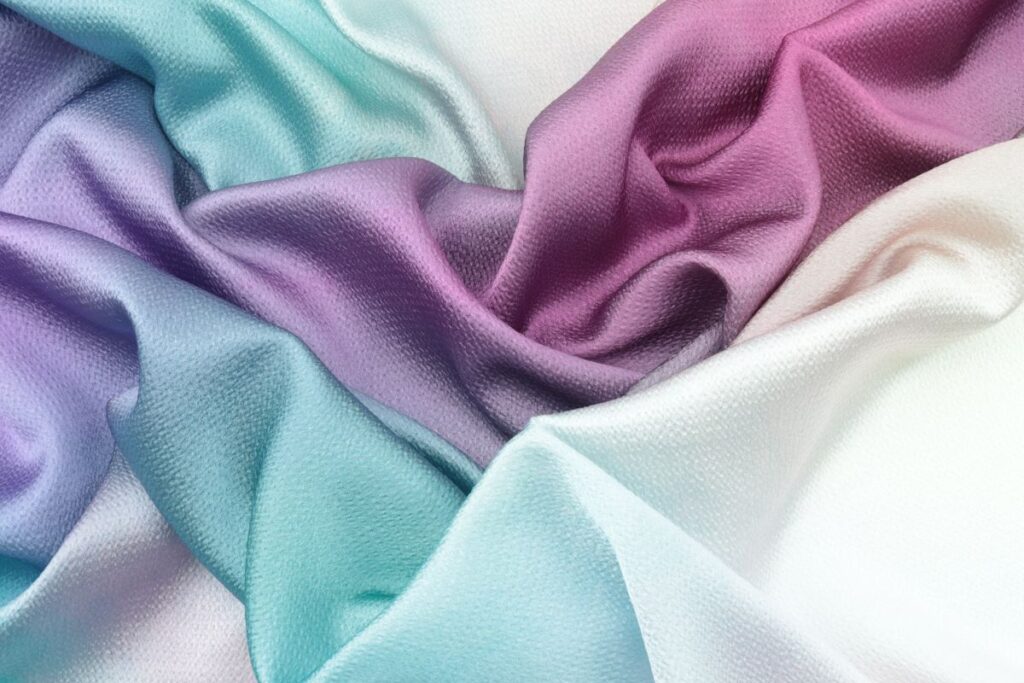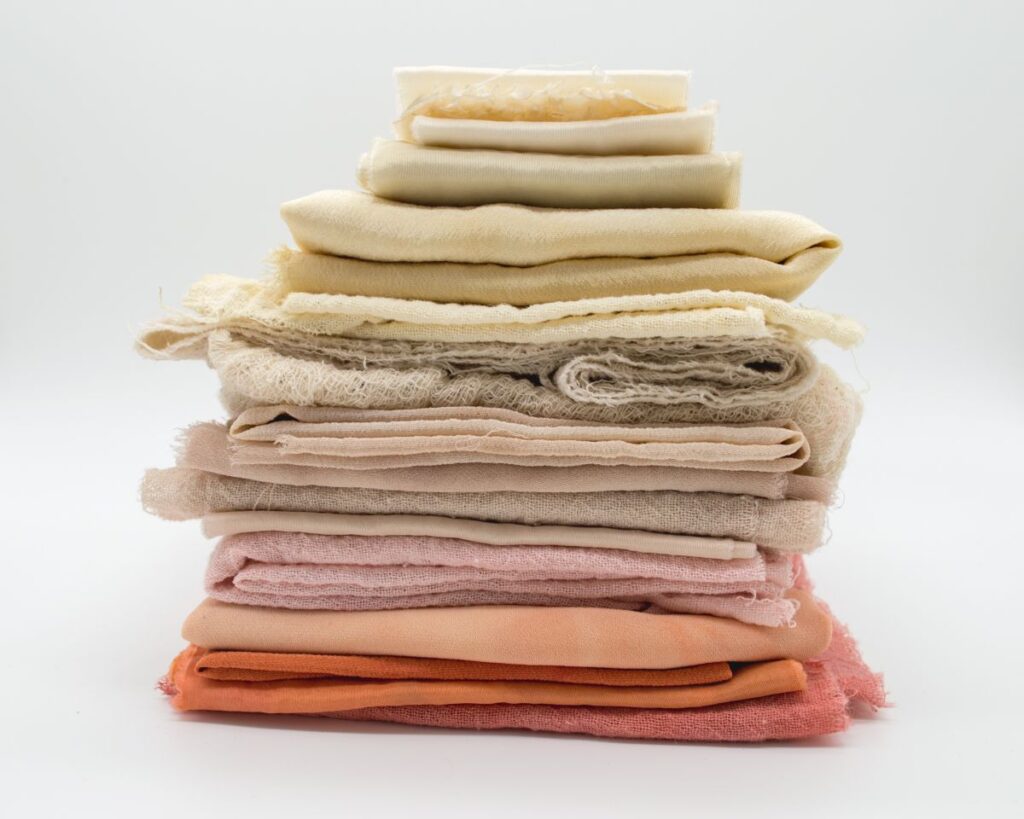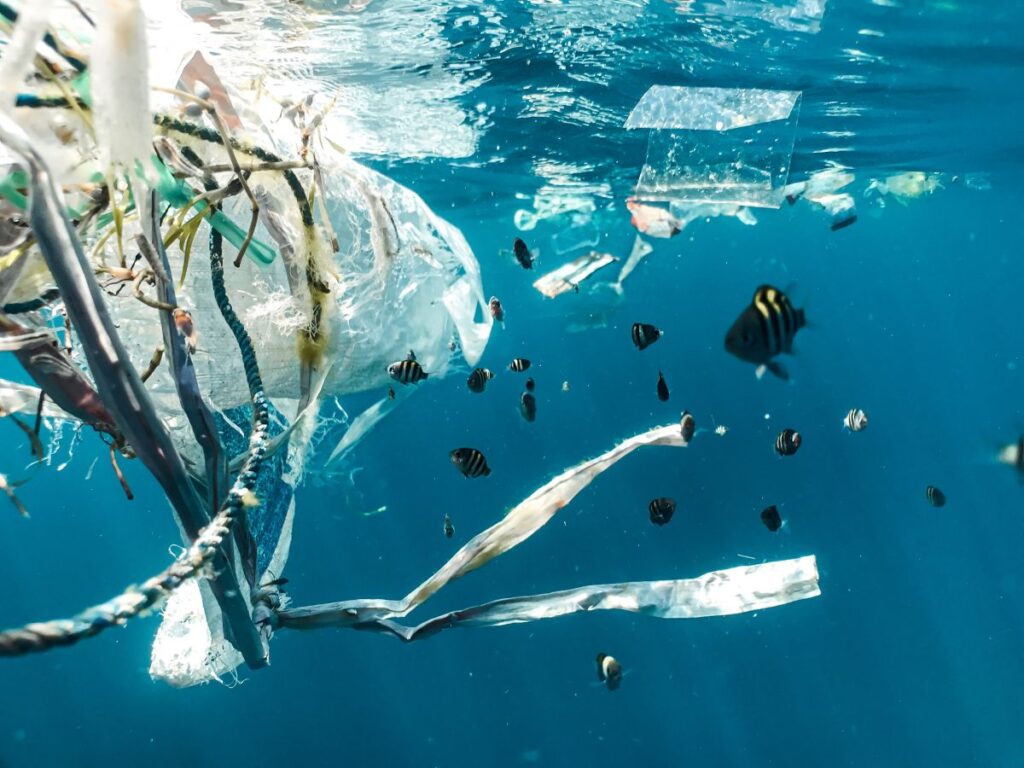Many consumers choose to buy fabrics made from recycled polyester. Customers may mistakenly feel they are helping the environment when they buy a product because they saw an advertisement claiming it was manufactured with recycled materials. In spite of this, recycled polyester has been heavily criticised for being unsustainable. How truly sustainable is recycled polyester?
More and more clothing manufacturers are opting to use eco-friendly materials like recycled polyester in an effort to reduce their impact on the planet. But isn't this just greenwashing?
Patagonia, the pioneer of this movement, began using recycled materials to produce its famed outdoor fleeces in 1993. Sustainable fabrics have come into widespread use since then. But can you always rely on recycled fibres to perform as well as brand new fibres? Shoppers should learn to consider not only who created an item of clothing, but also what was used to make it. This article discusses the evolution of polyester, the benefits and drawbacks of the material, and how to choose the most eco-friendly fabric.
What Is Polyester?
In the 1930s, DuPont, a chemical company, developed a synthetic fibre known as polyester in a laboratory. Polyethylene terephthalate (PET) is the most widely used kind of polyester and can be found in a wide variety of products. Polyester, which has been around since the 1960s, is currently the most widely used fabric in the world. As a result of PET's molecular structure, garments made from the material are less likely to shrink or stretch, as well as being more convenient to care for, dry quickly, and avoid creases. Polyester's dominance in the textile industry shows no signs of abating; in 2018, it accounted for 52% of all fibres produced worldwide, data from Textile Exchange shows.
FAQs About Polyester
Designing clothes with recycled polyester has a number of advantages. Firstly, because polyester accounts for over half of fibres used in the textile and apparel industry – replacing it with a recycled alternative is instantly going to be better at reducing dependency on fossil fuels. The development of a popular non-virgin alternative will have a positive impact on energy requirements in the future. This will act as a tool to help brands cut their greenhouse gas emissions across the supply chain.
Secondly, recycled polyester helps to reduce the seismic waste in the fashion industry that sees over 48 million mt of clothes disposed of annually. It is an intuitive way to find value in waste and encourages positive recycling behaviours. It also introduces shoppers to the innovative possibilities of sustainable fabrics.
Like with many things in sustainable fashion, recycled polyester isn’t a black and white issue or an instant fix to the environmental problems created by fashion production. rPET is not a completely sustainable option. The material still sheds microplastics which can contribute to the previously mentioned plastic pollution.
A main challenge of recycled polyester clothing is that it is not guaranteed to be recyclable. This is because companies often lack the correct machinery and infrastructure to break down the components of the fibre correctly for them to be re-used. What’s more – rPET garments cannot be recycled infinitely because each time they are heated, it degrades the plastic slightly which can remove durability qualities. Inevitably this means, recycled polyester garments can end up in landfill like conventional polyester.
As mentioned, the production of the recycled material is far better for the environment than its non-recycled counterpart derived from fossil fuel. What it does mean is that rPET is not, at least currently, a sustainable or sufficient end goal when it comes to transforming the fashion industry.
Recycled Nylon has the same benefits as recycled polyester: It diverts waste from landfills and its production uses much fewer resources than virgin nylon (including water, energy and fossil fuel). A large part of the recycled nylon produced comes from old fishing nets.
Machine wash your recycled nylon garments in cool to warm water with a mild powdered laundry detergent (non-toxic, biodegradable types preferred). Line dry or tumble dry on low heat.
History Of Recycled Polyester
1993. It was at that time that the first recycled polyester was developed. Not until roughly 2017 did it become widely used in the US. Over 24 years passed before it was used by the fashion industry. That is aside from Patagonia.
Since the advent of recycled poly, Patagonia has been employing it in their garments. Brands were slow to use the technology at first because of its lack of precision. It was difficult to get yarns of a uniform size, and the recycling process produced yarns of varying hues because bottles of varying colours were being processed. This created a lot of problems for the people who were knitting, weaving, and dying the fabrics. But technology has improved greatly during the past quarter century and more. To the point that it's difficult to tell the difference between new and recycled. So it stands to reason that more companies will follow suit and start making eco-friendly choices today.
Is RPET Sustainable?
There has been no attempt to slow the speeding train of plastic trash. However, there is no shortage of original minds who are sprinting behind the train to clear up the wreckage caused by our uncontrollable materialism. The plastic used to make water and soda bottles is called PET (Polyethylene terephthalate). This is petroleum- and natural gas-based plastic. Polyester yarn, one of the most popular fashion materials, may be created from chemically processing recycled polyester bottles. As a result, rPET fabric, which is made from recycled plastic bottles, has become popular (recycled PET). Though Patagonia has been at it since the 1990s, the movement to recycle has gained momentum in the recent years as the issue of plastic pollution has become more widely understood.
This cloth is gaining in popularity and is being promoted as a viable option for reducing garbage production. A wide variety of clothing, including undergarments, athletic wear, swimwear, and outerwear, is now available for purchase that is made from recycled materials. Its creativity keeps waste out of polluting landfills and cuts down on the amount of raw materials needed to meet our rising demand for new apparel. Recycling existing PET reduces the carbon emissions and energy required to process the plastic into a wearable fibre.
We can safely say that this plan has a high probability of success in every respect. If only life were that simple. While rPET is undeniably more environmentally friendly than virgin PET, the fabric is experiencing backlash from environmentally aware shoppers who no longer wish to buy plastic in this form.
- There are some substantial arguments against rPET:
- Microfibers are still released.
- There is still a significant cost associated with recycling.
- It still promotes the use of plastics and the manufacturing of new garments.
- However, the plastic is still disposed of in landfills after its second use.
- Some claim that by marketing products made from recycled plastic bottles (rPET), brands are tricking consumers into supporting an unsustainable activity.
However, Let’s Get Into the Details
Microfibres
The most immediately concerning issue is the unimpeded release of plastic microfibres into the water supply from man-made garments. Because of the way that plastic fibres break down under stress, they can release microscopic plastic particles into the wash. These microplastics have made their way into our waterways and drinking supplies because they are too small to be caught by wastewater treatment plants (which remove between 65 and 92 percent of such particles). Every time you wash your clothes, they may release hundreds of tiny plastic particles. Given the data, we think the only option is to immediately stop using any synthetic fibres in clothes. If you want to know more about microfibre contamination without us repeating ourselves, check out this recent post I wrote:
There's conflicting evidence on whether recycled polyester (rPET) or pure polyester (virgin PET) sheds more, but it's generally agreed that quality counts when shopping for polyester clothes. The less the fibres shed in the wash, the thicker and higher quality the cloth appears to be. My above-mentioned blog piece has more advice on how to minimise microfiber loss.
Recycling Isn’t Green
Most recycling techniques rely on toxic chemicals and noisy machinery. Recycling plastic requires fewer natural resources and generates less carbon dioxide than making new plastic, but the recycling process is so filthy that in 2018, China prohibited its recycling imports. Having shipped this environmental threat elsewhere, Australians must now deal with it at home, and recycling is no longer looking like the simple solution it once did. Maybe it's not a silver bullet after all.
Producing 1 kg of virgin PET uses 2 kg of oil and results in 6 kg of CO2 emissions. Melting down PET bottles to make rPET fabric creates hazardous organic chemicals that are bad for factory workers' health and the health of any plants or animals in the immediate vicinity. The next step is to transform it into the finished fibre product. So, even after recycling, PET still emits 3.5 kg of CO2 per kg of plastic, which is about 40% less than virgin PET. Then it has to be transported to the garment sector, where it will undergo additional processing and colouring in their notoriously inefficient production facilities.
Even though manufacturing recycled PET uses 75% less energy, and producing it produces 60% less carbon dioxide, we still haven't invented a truly sustainable material that would be particularly beneficial in a circular economy. While these statistics seem realistic when compared to virgin PET, they become wildly implausible when viewed besides those for natural alternatives.
To avoid further degradation, plastic bottles used to make apparel can only be down-cycled once before they become useless. Even if a piece of clothing was made from recycled plastic, the energy required to recycle it would outweigh the energy saved if the owner wore it fewer than 30 times. (Using the #30wearschallenge's long-accepted metrics.)
Greenwashing
Unfortunately, recycling and proper waste management facilities are still lacking in many nations. Although these plastic bottles are sold worldwide, they are often discarded into water systems rather than recycled (cough* Micronesia). Maintaining current rates of plastic production while recycling only a small fraction of it will not solve the problem as long as this business model remains profitable for manufacturers. When the very corporations whose wasteful manufacturing practises we decry go on to make the recycled plastics... What happened to "greenwashing"?
To illustrate, Coca-Cola receives royalties from the sale of Ekocycle linens and Emeco furniture, both of which are crafted from recycled versions of their original virgin plastic bottles. They started doing this before we knew what microfibers were or how widespread plastic pollution was. As a result, these businesses can reap even greater financial benefits from producing virgin plastic due to the increase in demand for their products. Instead of recycling plastic bottles, they are increasing their profit per kilogramme of plastic sold while maintaining production levels. What's in it for a big firm like Coca-Cola to kerb the use of plastic? Is there any hard data showing that encouraging the use of recycled plastic (rPET) has led to a decrease in overall plastic usage around the
Recycled Polyester Fabric Is Not A Solution For Fast Fashion
In order to solve the environmental issues that accompany fast fashion, the use of recycled fibres is a highly precarious proposition. It gives the impression to consumers that fast fashion is harmless and encourages them to indulge in it. Although we may feel better about our purchases after reading such corporate greenwashing, our money is not actually making the difference we hope it will. And we continue to contribute to the issue.
Reusing, Repurposing, and Reusing
Downcycling refers to the practise of recycling materials into lower-quality products. The term "upcycling" refers to the process of recycling an item while simultaneously increasing its worth. One example of a downcycled product is fabric made from recycled plastic water bottles. The empty water bottle could be transformed into a decorative spray bottle or a watering can for indoor plants.
Can you tell what the distinction is? A new, lower-quality product is created from the original item. One party uses no processing to transform an item into something completely different, whereas the other party does so.
A New Term, "Circularity," Has Replaced "Downcycling."
Down cycling has been renamed circularity as of late. Products with cradle-to-cradle or circularity design can be recycled indefinitely or biodegrade without causing any harm to the environment. Biodynamic farming is a great illustration of a circulation system that is both effective and fashionable. As with other recycling practises, downcycling ultimately leads to the trash heap.
Example: Swimmers Made From Recycled Plastic Water Bottles.
It is not possible to recycle rPET bottles back into bottles after they have been made into cloth. It's over with. So that's why you won't find any round PET fabric. They have the future wrong. Getting to the landfill will just take longer. You may turn your old swimmers and yoga pants into new pillow and carpet stuffing at the landfill, and then burn the new pillow and carpet stuffing to generate energy.
And that's the final chapter in this cycle. Polyester carpet cannot be recycled due to prohibitive production costs. As it stands, recycling would result in a financial loss for businesses because no marketable products can be created from it.
Potentially, One More Stage Lies Ahead
The possibility of converting carpet into polyol, which can be utilised in foams, has been explored by some businesses. While polyurethane foam products are now subpar, they do buy some time before they must be discarded in a landfill.
Pet Cloth Is Greener Than Trash.
Both, actually. Polyester yarns that have been reprocessed have various drawbacks.
You should know that recycled poly isn't as eco-friendly as you may hope. Since, as I've already mentioned, most of these items will end up in a landfill after you've worn them, this is the case. And there is still a long way to go before the procedure is ideal. According to certain media outlets, dyeing recycled yarns takes nearly 30% more time than dying virgin polyesters of the same weight. That's a significant increase in the availability of dye chemicals.
Though poly isn't always ideal, there are situations when it's essential in the design process. The concept of swimsuits made from organic cotton fabric is appealing because of its sustainability. After becoming wet, they would immediately become a million pounds in weight and lengthen to fill the entire pool. Is a cotton t-shirt something you'd wear into the water? No. Recycled pet fabric is preferable to new fabric in these circumstances. However, the superiority of recycled polyester fibre over virgin should not encourage consumers to go on a spending binge.
What Can You Do?
Get the Facts
It's great that recycled poly has been around for a while, but it's time to move on. Let's take a look at the history of nylon and polythene. Twenty-five years have passed since its inception. And companies are only now realising it exists and marketing it to you as novel. Like a swimsuit or a pair of yoga trousers made by a company that is also helping to end the global plastic pollution crisis. Delete. Up to now, 21 different companies have announced the launch of their own "unique" recycled swimwear collections. And yet, major companies like ADIDAS and Nike are already utilising the cloth. At this point in time, RECYCLED FIBERS are used by EVERYONE. And Zara too! I think that's a good thing, actually. We'd like to see these eco-friendly choices replace the exceptions and become the norm.
Buy Less
Due to misleading information and deceptive advertising, we tend to buy and consume more than we need to. Don't fall for that. Companies find an opening in the market for a product or service that few consumers are familiar with. They take advantage of the fact that you, the consumer, are ill-informed. They use deceptive marketing practises to increase sales and convince you to buy more of their products. They don't disclose that when you're done with your recycled-fabric swimsuit, the cloth goes straight to the trash. They omit the inconvenient details. In an effort to get you to spend more. Keep in mind that no amount of consumer spending, no matter how environmentally beneficial the item, will solve the challenges of rapid fashion or the planet.
Conclusion
In 1993, Patagonia made outdoor fleeces using recycled materials. 52% of global fibres were recycled polyester in 2018. This article examines polyester's history, pros and cons, and how to pick the greenest fabric. Recycling plastic bottles is becoming more popular to reduce waste. Recycling polyester bottles chemically produces polyester yarn, a desirable fashion material.
Brands may be duping people into supporting an unsustainable lifestyle by selling rPET products. Washing garments can release hundreds of small plastic particles. Microplastics have entered our waterways and drinking supplies. Based on the research, we recommend discontinuing synthetic clothing fibres. The linen looks thicker and better if it sheds less in the wash.
Fast fashion's environmental problems cannot be solved by recycling polyester fibres. As long as manufacturers profit from this business model, maintaining current plastic manufacturing while recycling only a small fraction would not alleviate the problem. Circularity replaces downcycling. Cradle-to-cradle or circularity products can be recycled endlessly or biodegrade. Production costs make polyester carpet unrecyclable.
Carpet may be turned into polyol for foams. Here, recycled pet cloth is better than new. Recycled polyester fibre outperforms virgin, but consumers shouldn't overspend. 21 firms have launched "unique" recycled swimwear collections, yet Adidas and Nike are already using it.
Content Summary
- Consumers like recycled polyester materials.
- Recycled polyester is still criticised for being unsustainable.
- To lessen their environmental impact, many apparel makers are using recycled polyester.
- Patagonia pioneered this concept by using recycled materials to make its outdoor fleeces in 1993.
- This article examines polyester's history, pros and cons, and how to pick the greenest fabric.
- PET, the most common polyester, is utilised in many items.
- Polyester, a 1960s invention, is the world's most popular fabric.
- According to Textile Exchange, 52% of all fibres produced in 2018 were polyester.
- Recycled Polyester History 1993.
- Technology has advanced considerably in the last 25 years.
- It's hard to discern new from recycled.
- Thus, more organisations will adopt eco-friendly practises today.
- PET plastic bottles water and beverage (Polyethylene terephthalate).
- Thus, recycled plastic bottle fabric (rPET) is popular (recycled PET).
- Patagonia has been recycling since the 1990s, but as plastic pollution has been more publicly acknowledged, the movement has grown.
- This cloth is becoming popular as a waste-reduction solution.
- Recycled undergarments, sporting apparel, swimwear, and outerwear are now available.
- Recycling PET reduces carbon emissions and energy needed to make wearable fibres.
- rPET is greener than virgin PET, yet eco-conscious buyers are turning away from it.
- The leakage of plastic microfibres from man-made clothes into the water supply is the most pressing issue.
- Plastic fibres break down under stress, releasing minute plastic particles into the wash.
- Microplastics are too small for wastewater treatment systems to catch, so they enter our waterways and drinking supplies (which remove between 65 and 92 percent of such particles).
- Washing garments can release hundreds of small plastic particles.
- Based on the research, we recommend discontinuing synthetic clothing fibres.
- This latest piece covers microfibre contamination without repeating ourselves: It's unclear whether recycled polyester (rPET) or virgin polyester (virgin PET) sheds more, but quality matters when buying polyester clothes.
- The thicker and better the material, the less it sheds in the wash.
- Recycle? Most recycling uses harmful chemicals and noisy machines.
- The recycling process is so dirty that China banned recycling imports in 2018.
- After exporting this environmental hazard, Australians must now deal with it at home, and recycling is no longer a straightforward solution.
- After recycling, PET emits 3.5 kg of CO2 per kg, 40% less than new PET.
- Plastic bottles used to create clothing can only be down-cycled once before they degrade.
- Greenwashing Many nations lack recycling and garbage management infrastructure.
- These plastic bottles are sold worldwide but often dumped into water systems (cough* Micronesia).
- As long as manufacturers profit from this business model, maintaining current plastic manufacturing while recycling only a small fraction would not alleviate the problem.
- Ekocycle linens and Emeco furniture, made from recycled plastic bottles, pay royalties to Coca-Cola.
- Instead of recycling plastic bottles, they are boosting profit per kilogramme of plastic sold while continuing output.
- Is there evidence that promoting recycled plastic (rPET) has reduced global plastic use? Fast Fashion Does Not Need Recycled Polyester. Recycled fibres are risky for fast fashion's environmental problems.
- It promotes quick fashion by making it seem harmless.
- We keep contributing.
- Recycled water bottle cloth is a downcycled product.
- From the original, a lower-quality product is made.
- Cradle-to-cradle or circularity products can be recycled endlessly or biodegrade without harming the environment.
- Downcycling, like conventional recycling, ends in the trash.
- So there's no spherical PET fabric.
- Production costs make polyester carpet unrecyclable.
- Sustainable organic cotton bikinis are intriguing.
- Here, recycled pet cloth is better than new.
- Recycled polyester fibre outperforms virgin, but consumers shouldn't overspend.
- Facts Recycled poly's longevity is amazing, but it's time to move on.
- Like a swimmers or yoga pants from a company fighting plastic waste.
- 21 companies have launched "unique" recycled swimmers lines.
- However, Adidas and Nike use the textile.
- Buy Less We overbuy and consume due to inaccurate information and deceitful advertising.
- Avoid that.
- A new product or service fills a market gap.

